Short Film Extinct Animals With Wild Horses Song
Animal extinctions may be caused by natural occurrences such as climatic heating or cooling or changes in sea levels. In more modern times, however, human activity has been to blame. Habitat destruction as farming land expands and forests are cut-down is the main cause of modern extinctions, along with pollution, the introduction of alien species, and over fishing or hunting. Increasingly, however, climate change is thought to be driving extinctions.
Here are 10 incredible animals that are now extinct. Read on to find out what happened.
-
10. West African Black Rhinoceros
The West African Black Rhinoceros was found in several countries towards the southeast region of Africa. Measuring 3-3.8 metres long and 1.4-1.7 metres in height, this rhino would have weighed 800-1,300 kg. It had two horns, one measuring 0.5-1.3 metres and the other between 2-55cm. Their diet included leafy plants and shoots. Some believe their horns had medicinal properties – though this had no grounding in scientific fact – which lead to heavy poaching. In the 1930's preservation action was taken to protect the species, but the numbers continued to decline. The last West African Black Rhino was seen in Cameroon in 2006. It was declared officially extinct in 2011.
Read More
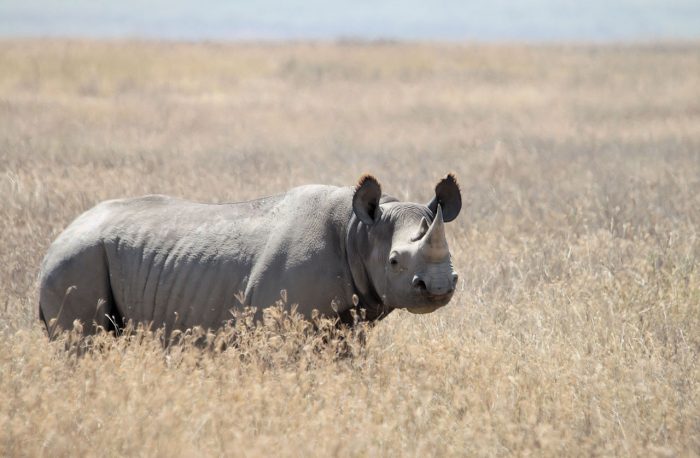
Picture credit: Africa Review
-
9. Baiji White Dolphin
Baiji White Dolphin, also called the Chinese River Dolphin, can only be found in the Yangtze River in China. These mammals could grow to eight feet long and weigh up to a quarter of a ton. They relied on echolocation to navigate and hunt for pray due to their tiny eyes and very poor eyesight. Living in the Yangtze for 20 million years, their numbers declined drastically from the 1950s onwards. As China industrialised, the river was used for fishing, transportation and hydroelectricity which had a huge effect on the mammals. Although not officially recorded as extinct, no one has seen a Yangtze River Dolphin since 2002.
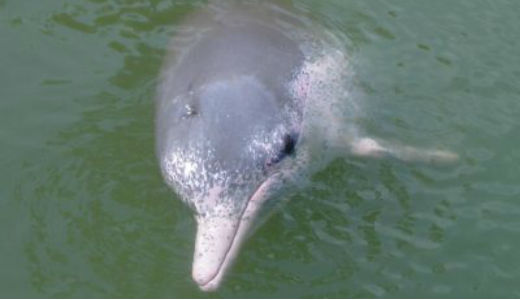
Picture credit: takoradee (Wikimedia Commons user)
-
8. Pyrenean Ibex
One of four subspecies of the Spanish Ibex or Iberian Goat that was found in the Iberian Peninsula. The Ibex would grow to a height of 60-76cm at the shoulder and weigh 24-80 kg and fed mainly on grasses and herbs. They were thought to have numbered 50,000 historically, but by the early 1900s its numbers had fallen to fewer than 100. The exact cause of the Pyrenean Ibex's extinction is unknown; scientists believe factors included poaching and the inability to compete with other mammals for food and habitat. The last Pyrenean Ibex was killed by a falling tree in northern Spain in 2000.
Read More

-
7. Passenger Pigeon
Native to North America, the Passenger or Wild Pigeon has been extinct since the early 20th century. It is estimated that between 3 and 5 billion Passenger Pigeons inhabited the US when Europeans arrived in North America, but their settlement led to mass deforestation resulting in habitat loss and a reduction in the bird population. By the 19th century pigeon meat was commercialized as a cheap food for the poor, which resulted in hunting on a massive scale. The Passenger Pigeon died out in the wild by around 1900, with the last known individual dying in captivity in 1914.

-
6. Tasmanian Tiger
Native to Australia, Tasmania and New Guinea, the Tasmanian Tiger was a large carnivorous marsupial. Not related to tigers, the creature had the appearance of a medium-to-large-size dog (it weighed 30kg with a nose to tail length of almost 2 metres) but dark stripes gave it a tiger-like appearance. It is believed to have been hunted to extinction – this was encouraged by bounties – but human encroachment into its habitat, the introduction of dogs and disease could also have contributed. The last wild Tasmanian Tiger was killed between 1910 and 1920, with the last captive one dying in Hobart Zoo, Tasmania in 1936.
Read More
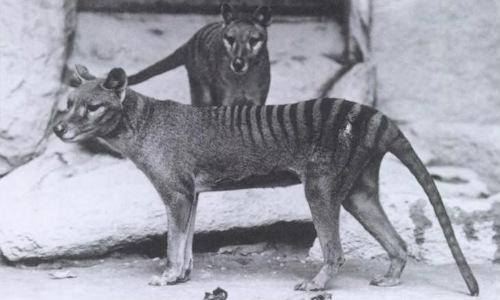
Picture Credit: Smithsonian Institute Archives
-
5. Stellers Sea Cow
Named after George Steller, a naturalist who discovered the creature in 1741, Stellers Sea Cow was a large herbivorous mammal. It is believed that Stellers Sea Cow which grew to at least 8-9 metres and weighed around 8-10 tons, inhabited the Near Islands, southwest of Alaska and the Commander Islands in the Bering Sea. It is believed that the mammal was tame and spent most of its time eating kelp; this, and the fact that it was unable to submerge its enormous body, is possibly what made it vulnerable to human hunters. Within 27 years of discovery by Europeans, Steller's Sea Cow was hunted to extinction.
Read More
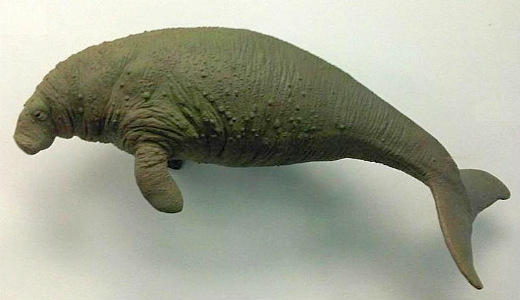
Picture credit: Emőke Dénes (Wikimedia Commons)
-
4. Great Auk
A large and flightless bird found in the North Atlantic and as far south as Northern Spain. It had an average height of 75-85 cm and weighed about 5kg. The Great Auk was a powerful swimmer which helped it to hunt underwater for food. The last colony of Auks lived on the island of Eldey and by 1835 they had all been killed. The last of these birds was killed by three men who caught it on St Kilda, Scotland in 1844. When a large storm surged, they believed that the auk was a witch and was causing the storm, so they killed it.

-
3. Dodo
An extinct flightless bird that inhabited Mauritius, the Dodo was about one metre tall and may have weighed 10–18 kg. The only account we have of the Dodo's appearance is through varied illustrations and written accounts from the 17th century so its exact appearance remains unresolved. It is presumed the bird became flightless due to the availability of abundant food sources (seeds, roots and fallen fruits) and a relative absence of predators. Dutch sailors first recorded a mention of the dodo in 1598. The bird was hunted to extinction by sailors and their domesticated animals, and invasive species. The last widely accepted sighting of a Dodo was in 1662.
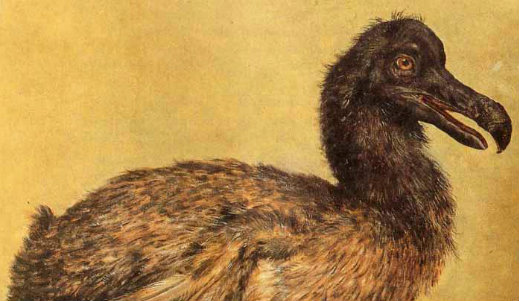
-
2. Woolly Mammoth
An enormous mammal, believed to be closely related to the modern-day elephant. Its ancestors migrated out of Africa about 3.5 million years ago, spreading across northern Eurasia and North America. The creature was over 4 metres tall and could weigh over 6 tons. They were covered in fur and their curved tusks could easily be up to 5 metres long! The Woolly Mammoth eventually disappeared 10,000 years ago through a combination of hunting by humans and the disappearance of its habitat through climate change. The last of the isolated woolly mammoth populations is believed to have vanished from Wrangel Island in the Arctic Ocean around 1700BC.

Picture credit: Flying Puffin (Wikimedia Commons)
-
1. Sabre-toothed Cat
Often called Sabre-toothed Tigers or Sabre-toothed Lions, they existed 55 million to 11,700 years ago. Sabre-tooth Cats were carnivores named for the elongated bladelike canine teeth, which in some species were up to 50cm long. Quite bear-like in build, they were believed to be excellent hunters and hunted animals such as sloths and mammoths. These felines could open their jaws at an angle of 120 degrees – almost twice as wide as a modern lion! It is believed the Sabre-tooth Cat's extinction may be linked to the decline and extinction of the large herbivores they hunted. Other explanations include climate change and competition with humans.
Read More

Picture Credit: Frank Wouters (Wiki Commons)
Short Film Extinct Animals With Wild Horses Song
Source: https://onekindplanet.org/top-10/top-10-worlds-extinct-animals/

0 Response to "Short Film Extinct Animals With Wild Horses Song"
Post a Comment